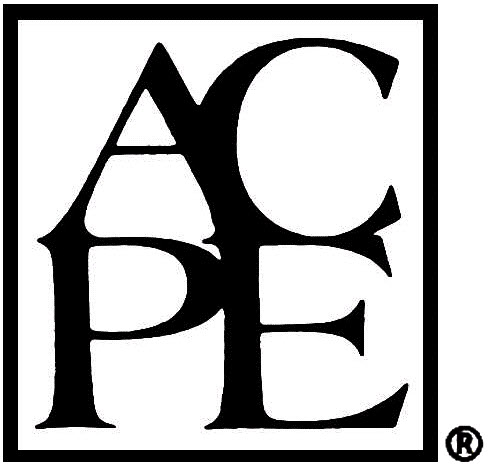Prescription Drug Misuse and Drug Diversion
Pain Management/Opioids CE for Pharmacy Techs
Are you a Pharmacist? Check out the Pharmacist version of this course.
Course Summary
In 2022, 16,416 prescription opioid overdose deaths were reported. This statistic exposes the importance of healthcare professionals remaining alert and assessing for the signs of substance use disorders and drug diversions. Clinicians should be aware of the behavioral characteristics and physical symptoms of a substance use disorder when prescribing, dispensing, and monitoring medications that are often misused. Systems, such as prescription drug monitoring programs, patient presentation, and patient responses to questions, can assist interprofessional teams in the identification of drug diversion and possible substance use disorders. Primary care professionals or specialists should be careful not to become too stringent when it comes to prescribing controlled substances so that patients who have legitimate medical needs are not denied adequate treatment.
Define prescription drug misuse
Identify patient drug misuse signs and risk factors
Describe common drug diversion tactics
Prepare approaches to reduce misuse or diversion
Course Syllabus
I. Introduction
II. Prescription Drug Misuse: Definitions and Evolution
III. The Current Prescription Drug Misuse Problem
A. Overdose Deaths
B. Prevalence of Prescription Drug Misuse
IV. Signs of Prescription Drug Use Disorders and Misuse
A. Behavioral Signs
B. Physical Signs
C. Drug Diversion, Doctor Shopping, and Doctor Hopping
D. Drug Theft and Prescription Forgeries
V. Methods of Detecting Prescription Drug Misuse or Diversion
A. Identity Drugs Commonly Misused or Diverted
B. Prescription Drug Monitoring Programs
C. Morphine Milligram Equivalents
D. Controlled Substance Prescribing Agreement and Drug Testing
VI. Controlling Prescription Drug Misuse without Denying Patients Proper Treatment
VII. Summary
- Read the course objectives and faculty planner disclosure
- Read the course material
- Complete the post-test with a minimum score of 70% and complete the course evaluation form.
- Results are automatically submitted to CPE Monitor
Faculty Planner Disclosure
The following individuals were involved in developing this activity: Kristina (Tia) Neu, Steven Malen, PharmD, MBA, and Pamela Sardo, PharmD, BS. Kristina (Tia) Neu, Steven Malen, and Pamela Sardo have no conflicts of interest or financial relationships regarding the subject matter. There are no financial relationships or commercial or financial support relevant to this activity to report or disclose by RxCe.com or any of the individuals involved in the development of this activity.
Unlabeled Use Disclosures
The information provided in this course is general in nature and it is solely designed to provide participants with continuing education credit(s). This course and materials are not meant to substitute for the independent, professional judgment of any participant regarding that participant’s professional practice, including but not limited to patient assessment, diagnosis, treatment and/or health management. Medical and pharmacy practices, rules, and laws vary from state to state, and this course does not cover the laws of each state; therefore, participants must consult the laws of their state as they relate to their professional practice. Healthcare professionals, including pharmacists and pharmacy technicians, must consult with their employer, healthcare facility, hospital, or other organization, for guidelines, protocols, and procedures they are to follow. The information provided in this course does not replace those guidelines, protocols, and procedures but is for academic purposes only, and this course’s limited purpose is for the completion of continuing education credits. Participants are advised and acknowledge that information related to medications, their administration, dosing, contraindications, adverse reactions, interactions, warnings, precautions, or accepted uses are constantly changing, and any person taking this course understands that such person must make an independent review of medication information prior to any patient assessment, diagnosis, treatment and/or health management. Any discussion of off-label use of any medication, device, or procedure is informational only and such uses are not endorsed hereby. Nothing contained in this course represents the opinions, views, judgments, or conclusions of RxCe.com LLC. RxCe.com LLC is not liable or responsible to any person for any inaccuracy, error, or omission with respect to this course, or course material.
Computer Hardware/Software Requirements
Please ensure the device you plan to use meets these requirements and specifications:
- Operating System: Windows 7,8,10, or 11 /Mac OS X 10.9 or later/iOS/Android
- Supported Browsers: Microsoft Edge, Firefox, Google Chrome, Safari, Opera
- A connection to the internet
- For Live Webinars or Conferences: GoToWebinar application for iOS, Android, Mac, or PC. You cannot 'call into' a live conference.
- Target Audience: Pharmacy Tech
- Secondary Audiences: This educational activity is also for other healthcare professionals, such as nurses, physicians, or others who may be part of a healthcare team and may be interested in this educational topic. A healthcare team approach to patient care may be discussed in this activity, as applicable. No state board or professional organization has evaluated this activity to determine whether it meets the continuing education requirements of nurses, physicians, or other professions not listed under the “Target Audience” described above. Always verify with individual employers or supervisors whether they will accept this educational activity upon completion.
- Contact Hours: 2.0 (0.2 CEUs)
- Activity Release Date: 3/18/2025}
- Activity Expiration Date: 3/18/2028}
- Activity Type: Knowledge
- UAN: 0669-0000-25-026-H08-T
- Topic: Pain Management/Opioids
- CeBroker Number: 20-1291321
Faculty:

RxCe.com, LLC is accredited by the Accreditation Council for Pharmacy Education as a provider of continuing pharmacy education.

RxCe.com, LLC, offers pharmacy technician continuing education courses for PTCB recertification. Pharmacy technician courses are indicated both in the Target Audience description and the ACPE UAN which will end with a "T".